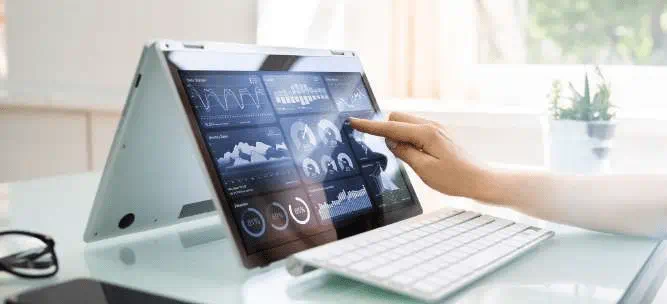
The Ship Robots
02 Sep 2020

The astounding progression of robotic technologies is playing a key role in the future of all industries. According to International Federation of Robotics (IFR), from 2020 to 2022 almost 2 million new units of industrial robots are expected to be installed in factories around the world. Like many different industries throughout the world, robots are impacting the maritime industry as well.
Take for example, SeaRobotics which has developed a Hull cleaning robot that helps save fuel and improves the efficiency of a ship. Their Hull BUG is a small autonomous vehicle which attaches itself to the underside of ships, using a negative pressure device that creates a vortex between the BUG and the hull. Sensors provide obstacle avoidance, path cleaning and navigational capabilities. A fluorometer lets the robot detect biofilm and then it uses rotary brushes or water-jets to scrub the fouling film off.
In another collaboration, the U.S. Maritime Administration (MARAD), has partnered with SEA-KIT to create robotic oil-cleanup vessels
Another solution by SeaDrone, can perform underwater Inspections in lieu of Dry Docking (UWILD). The solution is designed in a way that provides an end-to-end hull inspection solution, inspecting a vessel in 1 hour and creating a certified report that can be quickly shared with the stakeholders.
An alternative use case for robots in the maritime industry is strengthening of anti-piracy measures. ReconRobotics has developed a small, dumbbell-shaped robot that can infiltrate the main deck of a boat for stealth inspections. Magnetic wheels allow it to crawl up the side of a ship onto the deck and manoeuvre around. Cameras enable the operators to see what’s happening in real-time, even during the night, with the help of infrared sensors. The company has recently been awarded a contract by U.S. Navy to develop the Recon Scout XT micro-robot for them.
Promare, a U.K. ocean-research nonprofit, in partnership with IBM will unveil their new, fully autonomous ship - Mayflower on Sept. 16th, across the Atlantic Ocean. This autonomous ship will follow the same route on which the original Mayflower travelled 400 years ago.
The Mayflower Autonomous Ship (MAS) is chiefly propelled by solar power, with a diesel generator on board as backup. IBM will power an onboard “AI Captain” with the ship leveraging edge computing for its AI and navigational smarts. All the data processing must be available on the ship because a vessel in the middle of the ocean can’t rely on satellites or cloud connectivity.
As COVID-19 shifts global structures and accelerates innovation, we can easily visualise how robotic technology could help ships continue operating through future pandemics.
Credits : Akhil Handa
Popular Articles
Guide to Getting Agriculture Loan: Application, Eligibility & Required Documents
Related Articles










-
Disclaimer
The contents of this article/infographic/picture/video are meant solely for information purposes and do not necessarily reflect the views of Bank of Baroda. The contents are generic in nature and for informational purposes only. It is not a substitute for specific advice in your own circumstances. Bank of Baroda and/ or its Affiliates and its subsidiaries make no representation as to the accuracy; completeness or reliability of any information contained herein or otherwise provided and hereby disclaim any liability with regard to the same. The information is subject to updation, completion, revision, verification and amendment and the same may change materially. The information is not intended for distribution or use by any person in any jurisdiction where such distribution or use would be contrary to law or regulation or would subject Bank of Baroda or its affiliates to any licensing or registration requirements. Bank of Baroda shall not be responsible for any direct/indirect loss or liability incurred by the reader for taking any financial decisions based on the contents and information mentioned. Please consult your financial advisor before making any financial decision.
The pandemic & cybersecurity
There is no doubt that the COVID-19 pandemic has caused an outbreak of new and unanticipated business moments. As digital spreads its roots deeper, it also increases the risk and impact of cyberattacks. The World Economic Forum’s COVID-19 Risks Outlook reported that 50% of enterprises were concerned about increased cyberattacks due to a shift in work patterns alone.
A TCS report states that, cybercriminals are using the heightened digital footprint and traffic to track vulnerabilities, or to siphon off money. They are launching Covid-19-themed attacks in the form of phishing emails with malicious attachments that drop malware to disrupt systems or steal data and credentials.
Attackers are creating temporary websites or taking over vulnerable ones to host malicious code. They lure people to these sites and then drop malicious code on their digital devices. Fake websites have also been soliciting donations for daily wage earners through email links. Some Covid-19 patient count-status apps and links are laden with viruses and identity theft malware. Remote working tools such as videoconferencing systems have been hacked for vulnerabilities; recent examples on Zoom are alarming.
In such a scenario, the first step in the right direction for Organisations would be to advise their staff and customers to be more vigilant and cautious especially when opening links, emails or documents related to the subject COVID-19.
Next, organizations should ensure their detection and ing capabilities are functional while keeping an eye on the impact of having many remote workers. There are some interesting solutions available in the market. For eg. KnowBe4 delivers on-demand internet security awareness training to small and midsized enterprises focussing on threats like social engineering, spear-phishing and ransomware.
Cofense provides organizations with the ability to improve their employees’ resilience towards spear phishing, malware and drive-by attacks and further facilitate employee-sourced detection of such attacks.
In India, cybersecurity start-ups like Cloudsek offers real-time information to prevent and monitor cyber threats through its SaaS platform. Another start-up Cyware’s cyber fusion solutions empowers organisations to foster information sharing with their employees mitigating cybersecurity risks.
The pandemic presents an opportunity for full-blown innovation, a dramatic shift in perspective and the adoption of safe and resilient operating processes. The intensity and emphasis an organisation brings to its cybersecurity strategy will determine its long term growth.
Credits : Akhil Handa
Your Digital Stylist
Dear Reader,
Fashion is one of the most challenging fields, highly impacted by global economic uncertainty as well as distinct trends and industrial changes. In response to the pressure for growth and cost efficiency, many brands have started a series of initiatives to improve their speed to market and to implement sustainable innovation.
As evident during the pandemic, the need to adapt and overcome has been paramount for fashion brands to survive. Brick-and-mortar fashion companies are feeling the pain augmented by Covid-19. Mall-based retailers reportedly saw earnings plunge 256% in Q2’20, according to Coresight Research and over 12,000 US stores closed in 2020, according to real estate company CoStar Group, up from 10,000 stores the year before.
One exciting innovation in the fashion industry has been the introduction of AI-based digital stylists and chatbots, that can give feedback to customers on outfit choices or suggest alternatives if required. For example, Stylesnap is an AI-powered feature built into the Amazon app that help you find looks you love quickly and easily. Take a photograph or screenshot of an outfit, upload it onto the Amazon app, and you'll be presented with items that look just like the ones in the picture.
Even Facebook is experimenting with an AI system of its own called Fashion++. The software uses AI to analyse a person’s outfit and suggest subtle alterations that it thinks could improve the look, like rolling up the sleeves or removing an accessory.
Israel-based Syte offers retailers and brands a camera button that can be added next to the search bar on a mobile website or app. Shoppers can upload images of their favorite styles through the button, and then see looks “inspired” by those images on the brand’s site. Syte counts a number of high-profile brands among its clients, including Tommy Hilfiger, Myntra, and Kohl’s. Even luxury brands are testing digital stylists in select markets: Prada, for example, has introduced a “personalized concierge” chatbot for its relaunched Chinese website.
Fashion-tech company Style.me provides virtual styling solutions, and has recently launched a powerful plugin that can integrate a 3D virtual fitting room to any online retail website.
Recently, Fashion Innovation Agency has introduced digital human stylists (DHS) that is powered by Microsoft AI, IoT and natural language processing. It can understand what’s in your wardrobe, what’s in your calendar, where you’re going, allowing personal recommendations that are visually and verbally communicated back to the user within your own home.
With the customers’ lives becoming progressively entwined with the digital world, it is imperative that brands in Fashion Industry start embracing the latest technologies to push their limits of manufacturing, marketing and wearability.
Credits : Akhil Handa Aparna Anand

